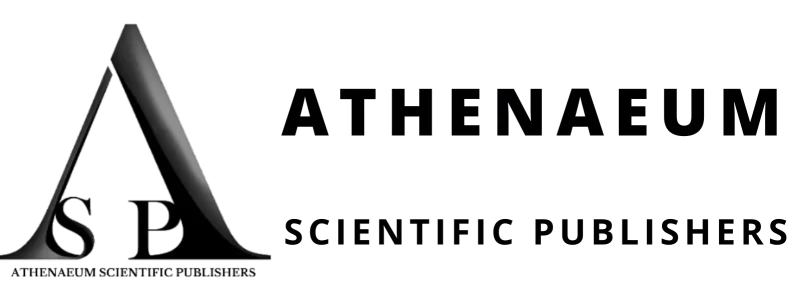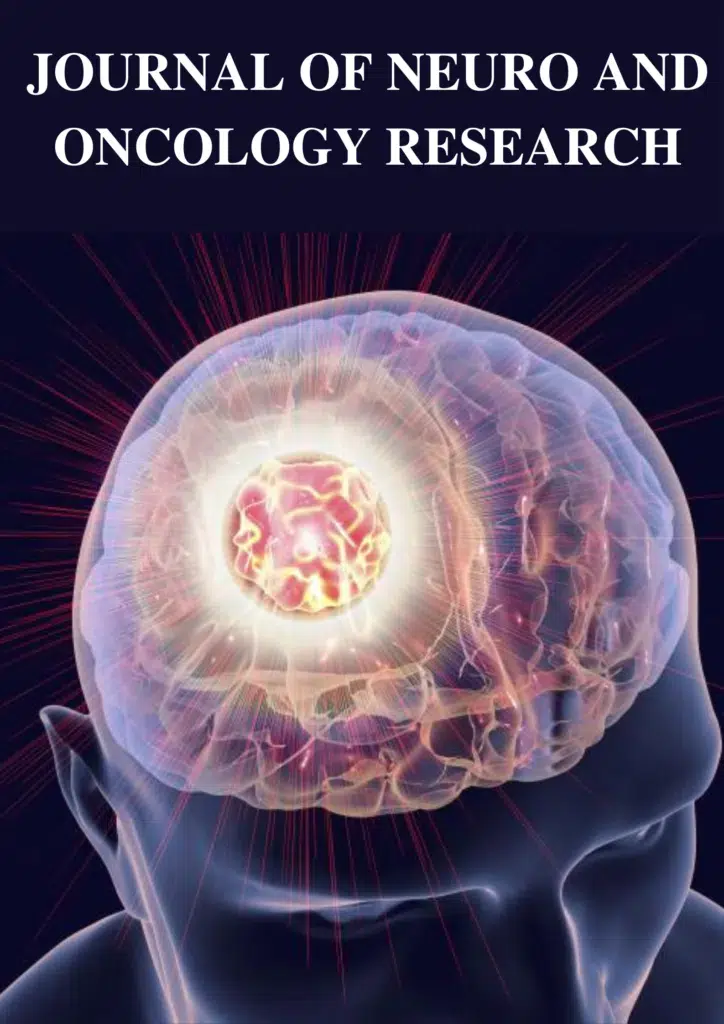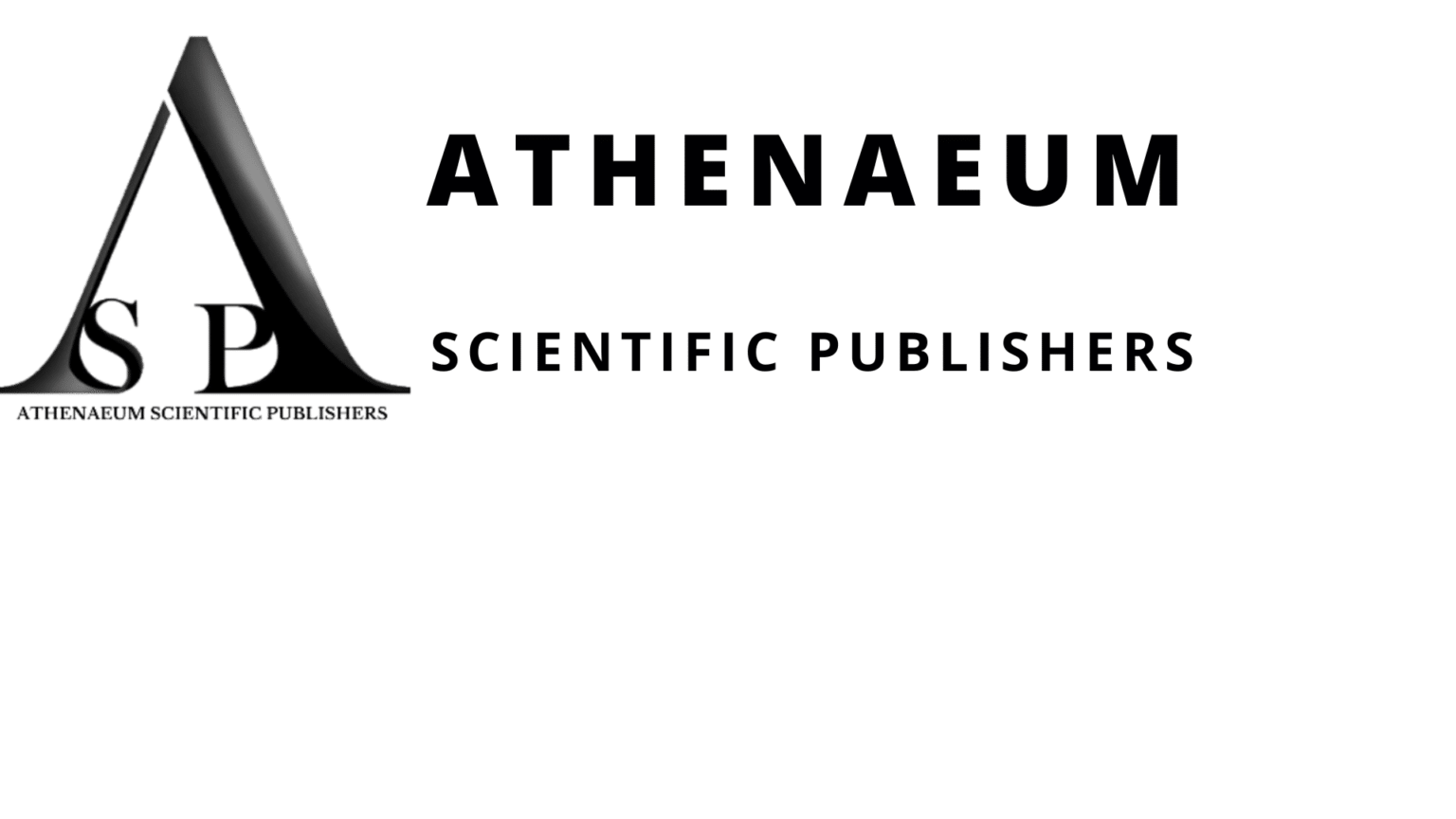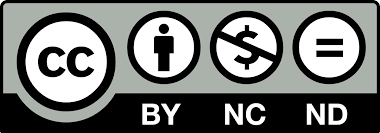Case Report | Vol. 5, Issue 1 | Journal of Neuro and Oncology Research | Open Access |
Physical Therapy Intervention of a 5-Year-Old Boy with Guillain-Barré Syndrome (GBS): A Case Report
Vaibhavi J Parmar1*
1Assistant Professor, Shree B.G. Patel College of Physiotherapy, Ganesh Chokdi, Sardar Ganj, Anand, Gujarat, India
*Correspondence author: Vaibhavi J Parmar, Assistant Professor, Shree B.G. Patel College of Physiotherapy, Ganesh Chokdi, Sardar Ganj, Anand, Gujarat, India; Email: [email protected]
Citation: Parmar VJ. Physical Therapy Intervention of a 5-Year-Old Boy with Guillain-Barré Syndrome (GBS): A Case Report. J Neuro Onco Res. 2025;5(1):1-4.
Copyright© 2025 by Parmar VJ. All rights reserved. This is an open access article distributed under the terms of the Creative Commons Attribution License, which permits unrestricted use, distribution, and reproduction in any medium, provided the original author and source are credited.
| Received 16 February, 2025 | Accepted 05 March, 2025 | Published 12 March, 2025 |
Abstract
This study focuses on a 5-year-old male child in the sub-acute stage of Guillain-Barré Syndrome (GBS), who received physical therapy for 15 weeks after hospital discharge following an Intravenous Immunoglobulin (IVIG) treatment. Physiotherapy sessions lasted 50 to 60 minutes per day, 5 days per week, with rest periods. The intervention included passive-active exercises, strengthening exercises, weight-bearing exercises, mat activities, breathing exercises, task-oriented balance and coordination training, gait trainingh and play activities. Outcomes were measured using the Manual Muscle Test (MMT), Wee Functional Independence Measure (WeeFIM), 10-Meter Walk Test (10MWT), Paediatric Balance Scale (PBS), Manual Ability Classification System (MACS) and the GBS disability scale. The study concluded significant improvements in the patient’s motor functions and independence in daily activities. Full motor recovery was achieved after 15 weeks of physiotherapy.
Keywords: Guillain-Barré Syndrome; Rehabilitation; Physical Therapy; Paediatric GBS; Motor Recovery
Introduction
Autoimmune disorders constitute a diverse group of conditions where immune dysregulation causes damage to healthy tissue [1]. Guillain-Barré Syndrome (GBS) is a rare, immune-mediated disorder of the peripheral nervous system characterized by acute or sub-acute onset of muscle weakness, often accompanied by sensory disturbances such as tingling or numbness in the limbs. In most cases, the condition manifests as a rapid onset of weakness, typically starting in the legs and progressively ascending to the upper limbs and facial muscles, leading to a generalized paralysis. Areflexia (absence of reflexes) is a hallmark of the condition, along with variations in autonomic function, which can complicate the clinical picture [2].
GBS is the most common cause of acute flaccid paralysis worldwide and while the exact cause is unknown, it is believed to be triggered by an abnormal immune response, often following infections such as respiratory or gastrointestinal illnesses. The immune system attacks the myelin sheath surrounding the peripheral nerves, leading to demyelination and impaired nerve signal transmission. There are several variants of GBS, with Acute Inflammatory Demyelinating Polyneuropathy (AIDP) being the most common.
The incidence of GBS is estimated to be 1-2 per 100,000 people per year, with males being 1.5 times more likely than females to be affected. The syndrome can affect people of all ages, though it has been reported more frequently in the 5 to 20-year age group. Seasonal patterns have also been observed, with a higher incidence in summer, followed by spring and winter [3].
Patients with GBS often present with rapidly progressing weakness and, in severe cases, may experience complete paralysis of nearly all skeletal muscles. Respiratory muscle involvement is a major complication, as approximately 70% of patients experience some degree of respiratory muscle weakness, with 25-30% requiring mechanical ventilation at the peak of the disease.
Treatment for GBS typically involves the administration of Plasma Exchange (PE) or Intravenous Immune Globulin (IVIG), which helps to reduce the immune system’s attack on the peripheral nervous system and speeds recovery [4]. Corticosteroids, which are effective in treating some immune-mediated disorders, have not been found helpful for GBS but are sometimes used in cases of Chronic Inflammatory Demyelinating Polyneuropathy (CIDP), a chronic variant of GBS.
Physical therapy plays a crucial role in the rehabilitation of GBS patients, especially after the acute phase, when patients often face significant challenges in regaining muscle strength, motor control and functional independence. As the patient begins to recover, the focus of physical therapy is to prevent secondary complications, such as contractures and muscle atrophy, while also promoting motor recovery, improving balance and enhancing overall functional ability. Therapists also provide psychological support and education to help patients cope with the sudden loss of function and to maintain motivation throughout the rehabilitation process [5-8].
The purpose of this case report is to describe the physiotherapy intervention in a 5-year-old boy diagnosed with GBS, who had experienced multiple episodes of the syndrome and to highlight the effectiveness of physiotherapy in promoting functional motor recovery and independence in daily activities.
Patient Information
A 5-year-old boy with a history of two previous GBS episodes (at ages 2 and 3) presented to our clinic after a third episode, following a fall and subsequent gastric disturbances. He was hospitalized for 22 days, received IVIG treatment (400 mg/kg for 15 days) and was discharged with instructions to continue physiotherapy.
Upon initial assessment, the patient had severe difficulty in sitting without support, was unable to use his arms for Activities of Daily Living (ADLs) and could not stand or walk even with support. He exhibited severely impaired sitting and standing balance, along with muscle pain in the feet, back and thighs during and after weight-bearing activities. Neurological examination showed intact cranial nerves and preserved sensation, though deep tendon reflexes were diminished and the knee jerk was absent.
Materials and Methods
Assessment Tools
- Manual Muscle Test (MMT) for muscle strength (MRC grading)
- Wee Functional Independence Measure (WeeFIM) for ADLs
- Paediatric Balance Scale (PBS) for balance assessment
- Manual Ability Classification System (MACS) for hand function
- 10-Meter Walk Test (10MWT) for gait speed
- GBS Disability Scale for disease-specific disability
- Outcome measures were recorded at the start and end of the 15-week intervention
Intervention
The patient underwent 15 weeks of physiotherapy, with sessions focused on:
- Breathing Exercises: Diaphragmatic and segmental breathing and spirometry to improve lung capacity
- Muscle Strengthening: Passive-to-active progression in all limbs. Resistance exercises with 0.5 kg weights were added for both upper and lower limbs
- Functional Strengthening: Weight-bearing exercises and task-oriented activities to improve hand function
- Mat Activities: Pelvic bridging, rolling, quadruped exercises and core strengthening to improve bed mobility and sitting balance
- Balance Training: Weight shifting, perturbations and reaching activities, progressed from sitting to standing and then to unstable surfaces like a balance board
- Gait Training: Treadmill and overground walking exercises were introduced, progressing from bilateral KAFO (Knee Ankle Foot Orthosis) use to unsupported walking. Play activities such as ball kicking and obstacle courses were incorporated to maintain the child’s interest
Result
There was a significant improvement in balance, gait speed, hand function and overall muscle strength. The child progressed from being unable to sit or stand without assistance to completing the 10MWT in 25 seconds. Functional independence improved as reflected in WeeFIM and MACS scores (Table 1).
Test | Pre | Post | Difference |
Paediatric Balance Scale (PBS) | 0 | 42 | +42 |
WeeFIM | 49 | 104 | +55 |
10-meter Walk Test (10MWT) | 76 sec | 25 sec | -51 sec |
Manual Ability Classification System (MACS) | Level 5 | Level 1 | +4 |
GBS disability scale | Level 4 | Level 2 | +2 |
Table 1: Test observation.
Discussion
In the case of this 5-year-old boy, the clinical presentation was consistent with GBS, including acute flaccid paralysis, diminished deep tendon reflexes and difficulty in performing basic motor tasks such as sitting, standing and walking. His inability to perform Activities of Daily Living (ADLs) independently, such as eating and dressing, posed significant challenges to his overall quality of life. Previous studies have demonstrated that early initiation of physical therapy can lead to better outcomes in patients with GBS. For instance, Kumar, et al., reported that high-intensity rehabilitation significantly reduces disability and improves motor function in patients with GBS. Similarly, Loveness, et al., observed that approximately 85% of patients with GBS achieve full recovery within several months to a year [7]. However, recovery can be delayed or incomplete in patients with recurrent episodes or severe cases, making early and intensive intervention critical [5]. In this study, the physiotherapy intervention was comprehensive and individualized, addressing each aspect of the patient’s impairments. Initially, the focus was on passive movements and breathing exercises to enhance lung capacity and prevent respiratory complications. As the patient progressed, active-assisted exercises were introduced, followed by active exercises with resistance. This gradual progression from passive to active movements is essential in GBS rehabilitation, as it allows the muscles to recover strength without overstressing the patient, who may still experience significant fatigue.
A key element in the patient’s recovery was task-oriented training, which focused on re-learning functional movements such as rolling, sitting, standing and walking. These activities were crucial for improving the patient’s ability to perform ADLs and regain independence. Balance training was another essential component, as the patient initially exhibited severe impairment in both sitting and standing balance. Task-oriented balance exercises, such as perturbations and weight shifting, were used to retrain the patient’s postural control, eventually progressing to more challenging activities on unstable surfaces [6]. The inclusion of play activities in the rehabilitation program also played a significant role in keeping the child engaged and motivated. Research has shown that incorporating play into therapy can enhance motor learning, especially in paediatric populations, by making the rehabilitation process more enjoyable and less stressful. Activities such as clay modelling, drawing and ball games were not only fun for the child but also helped improve hand function, coordination and lower extremity strength. The outcome measures used in this study, including the Paediatric Balance Scale (PBS), Wee Functional Independence Measure (WeeFIM), 10-Meter Walk Test (10MWT), Manual Ability Classification System (MACS) and GBS disability scale, provided objective data to assess the patient’s progress. The results demonstrated significant improvements in muscle strength, balance, hand function and gait speed after 15 weeks of physiotherapy. The patient progressed from being unable to sit or stand independently to walking without support, completing the 10MWT in 25 seconds by the end of the intervention [7-9]. The results are consistent with findings from other studies, which highlight the importance of early, intensive rehabilitation in achieving favourable outcomes in GBS patients. The patient’s complete motor recovery is a testament to the effectiveness of a structured, task-oriented physiotherapy program. However, it is essential to note that GBS recovery can vary depending on the severity of the disease, the timing of intervention and the presence of complications such as respiratory failure. In this case, the patient’s young age and prior full recoveries from GBS may have contributed to his rapid improvement. The fact that the patient did not require mechanical ventilation during this episode also indicates a less severe disease course compared to some GBS cases. Overall, this case report underscores the critical role of physical therapy in the recovery process following GBS. The intervention led to significant improvements in muscle strength, balance and functional independence, enabling the patient to return to his normal activities. Further research is needed to explore the long-term outcomes of physiotherapy in pediatric GBS patients, especially those with recurrent episodes or more severe presentations [10].
Conclusion
The study highlights the significant role of physiotherapy in the functional motor recovery of a child with GBS. After 15 weeks of intervention, the patient achieved substantial improvement in muscle strength, balance and gait, ultimately regaining independence in ADLs.
Conflict of Interests
The authors have no conflict of interest to declare related to this article.
References
- Medina R, Derias AM, Lakdawala M, Speakman S, Lucke-Wold B. Overview of emerging therapies for demyelinating diseases. World Journal of Clinical Cases. 2024;12(30):6361-73.
- Wu CL, Chao CH, Lin SW, Chien YY, Huang WY, Weng WC, et al. Case report: Plasma biomarkers reflect immune mechanisms of Guillain–Barré Syndrome. Front Neurol. 2021;12:720794.
- Angelika, F., Hahn. Guillain-Barre syndrome. Lancet. 1998; 352: 635 -641
- Teitelbaum JS, Borel CO. Respiratory dysfunction in Guillain-Barré syndrome. Clin Chest Med. 1994;15:705-14.
- Jawaid W, Sana R, Umer SR, Nisa Q, Butt M, Shahbaz N. Relationship between cerebrospinal fluid protein level and electrophysiologic abnormalities in the acute inflammatory demyelinating polyradiculoneuropathy variant of Guillain-Barré syndrome. Ger Med Sci. 2021;19:12.
- Somaiya K, Qureshi MI, Kovela RK, Bele AW. Effectiveness of chest physiotherapy and early mobilization in patients with Guillain-Barre syndrome. J Med Pharm Allied Sci. 2021;10:3904-6.
- Hahn AF. The challenge of respiratory dysfunction in Guillain-Barré syndrome. Arch Neurol. 2001;58(6):871-2.
- Virani A, Rabold E, Hanson T, Haag A, Elrufay R, Cheema T, et al. Guillain-Barré syndrome associated with SARS-CoV-2 infection. IDCases. 2020;20:e00771.
- Fearnhead L, Fritz VU. Guillain-Barre syndrome. South African J Physiotherapy. 1996;52(4):85-7.
- Simatos Arsenault N, Vincent PO, Yu BH, Bastien R, Sweeney A. Influence of exercise on patients with Guillain-Barré syndrome: a systematic review. Physiotherapy Canada. 2016;68(4):367-76.
Author Info
Vaibhavi J Parmar1*
1Assistant Professor, Shree B.G. Patel College of Physiotherapy, Ganesh Chokdi, Sardar Ganj, Anand, Gujarat, India
*Correspondence author: Vaibhavi J Parmar, Assistant Professor, Shree B.G. Patel College of Physiotherapy, Ganesh Chokdi, Sardar Ganj, Anand, Gujarat, India; Email: [email protected]
Copyright
Vaibhavi J Parmar1*
1Assistant Professor, Shree B.G. Patel College of Physiotherapy, Ganesh Chokdi, Sardar Ganj, Anand, Gujarat, India
*Correspondence author: Vaibhavi J Parmar, Assistant Professor, Shree B.G. Patel College of Physiotherapy, Ganesh Chokdi, Sardar Ganj, Anand, Gujarat, India; Email: [email protected]
Copyright© 2025 by Parmar VJ. All rights reserved. This is an open access article distributed under the terms of the Creative Commons Attribution License, which permits unrestricted use, distribution, and reproduction in any medium, provided the original author and source are credited.
Citation
Citation: Parmar VJ. Physical Therapy Intervention of a 5-Year-Old Boy with Guillain-Barré Syndrome (GBS): A Case Report. J Neuro Onco Res. 2025;5(1):1-4.



